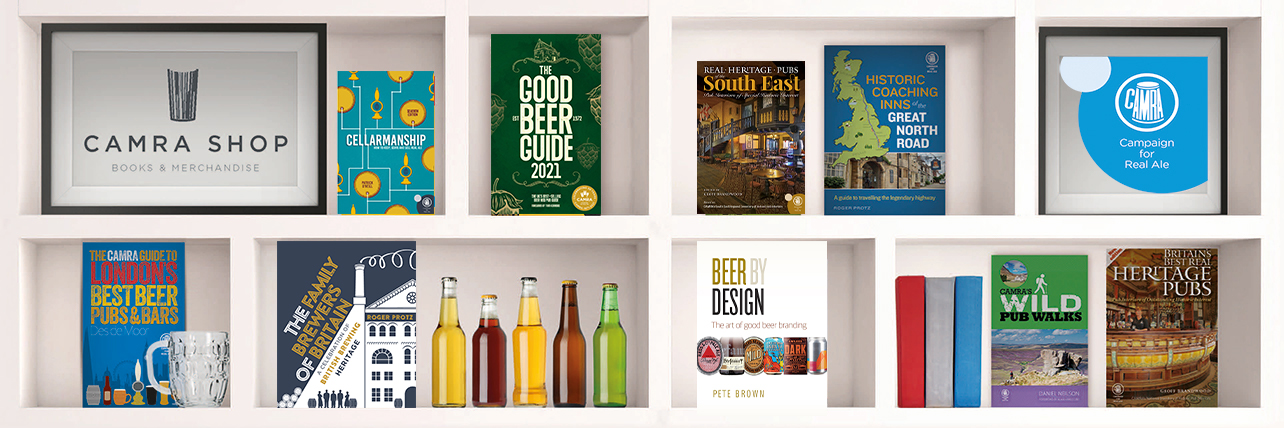Learn & Discover
Learn & Discover
Cider Lexicon – Part.1
Unlike beer, wine and spirits, cider lacks a lexicon – a set of language and descriptors specifically associated with cider (although often shared with other drinks). A lexicon helps the trade, and ultimately the consumer, to understand the full range of different flavours, processes, cultures and styles that exist within the world of cider. Building on his book Modern British Cider, Gabe Cook develops a shared a language that can form the basis for the description and understanding of cider within CAMRA, the trade and with consumers. A technical and narrative language to give the full story of what cider is, how it is made, how it is presented to the consumer and ultimately how it is consumed.
Gabe Cook
Gabe is leading the charge for a cider revolution. AKA ‘the Ciderologist‘ Gabe is an international consultant, writer, broadcaster, and educator on all matters cider.
Beer dispense containers
Sub title goes here – delete if N/A
Lorem ipsum dolor sit amet, consectetur adipiscing elit. Nullam lobortis vel sapien nec faucibus. Morbi consectetur pulvinar lectus, vitae sodales tellus. Sed sagittis aliquam convallis. Duis mollis libero eu massa luctus, id euismod urna fringilla. Aenean condimentum accumsan leo nec eleifend. Maecenas ullamcorper est non justo pulvinar accumsan.
Emma Inch
A CAMRA member since 1997, John is volunteer with a keen interest in the technicalities of beer dispense, a GBBF bar manager, editor of Manchester’s Beer Buzz magazine and sits on CAMRA’s Technical Advisory Group.

Cider has a fabulously long-standing heritage in the UK, and for at least the last 400 years, there has been an established industry focussed on the growing of apples and the making of cider. This started as an endeavour for the estate, and then turned into a regional, cottage industry before becoming the commercial, national industry that we know today.
Over the similar timeframe across Europe, beer and wine established sets of understood and producer-endorsed phrases, descriptions and names that facilitated a differentiation between the multitude of different offerings. Terms such as lager, porter, Champagne and Beaujolais are well known, agreed upon, and are often protected evocations of different drinks brought about through specific ingredients and processes, often linked to a particular landscape and heritage.
Cider in Britain has never achieved such language, categorisation or identification. Maybe because it remained ostensibly a rural pursuit, made and consumed on the farm or within the confines of the local village, that there was no desire to develop set of descriptors. By the time cider is removed from its place of origin, being served around the country, the era of ‘brand’ had emerged, with storytelling and descriptions of the experience more prescient than describing a nuanced making process or articulating specific flavours. Its primary differentiator largely was (and still is) that it is a cider, rather than a beer or wine.
So that is where cider largely remains today, simply: cider. This provides a great challenge for the industry. How can the drinks trade and consumer’s awareness of the multitude of different processes, flavours, occasions and of cider be known if we don’t have a unified language that helps to explain all of this? It’s time that a lexicon was developed for cider.

Cider has a fabulously long-standing heritage in the UK, and for at least the last 400 years, there has been an established industry focussed on the growing of apples and the making of cider. This started as an endeavour for the estate, and then turned into a regional, cottage industry before becoming the commercial, national industry that we know today.
Over the similar timeframe across Europe, beer and wine established sets of understood and producer-endorsed phrases, descriptions and names that facilitated a differentiation between the multitude of different offerings. Terms such as lager, porter, Champagne and Beaujolais are well known, agreed upon, and are often protected evocations of different drinks brought about through specific ingredients and processes, often linked to a particular landscape and heritage.

Cider in Britain has never achieved such language, categorisation or identification. Maybe because it remained ostensibly a rural pursuit, made and consumed on the farm or within the confines of the local village, that there was no desire to develop set of descriptors. By the time cider is removed from its place of origin, being served around the country, the era of ‘brand’ had emerged, with storytelling and descriptions of the experience more prescient than describing a nuanced making process or articulating specific flavours. Its primary differentiator largely was (and still is) that it is a cider, rather than a beer or wine.
Current Differentiation of Cider
It would be erroneous of me to say that there are no descriptive words associated with cider today, but the origin, intent and use of such words do not do anything greatly positive for the advancement in knowledge and passion of cider’s full fabulousness and diversity.
Firstly, we have those thoughts, feelings and descriptions of lived negative experiences which lead to preconceptions about all ciders:
- “I once drank 3 litres of Super Mega Blend at a house party as a teenager, was violently ill and now I cannot bear the smell of cider. Horrible stuff.”
- “I see cider being abused by people on the streets because it’s highly alcoholic and cheap. It’s not a drink for me.”
- “I went on holiday with my folks to Devon when I was a kid. Mum and Dad drank 3 pints of ‘Old Gut Rot’”, got riotously drunk and fell in a ditch. Funny as it was, the cider tasted of vinegar and that’s not for me.”
Secondly, what can consumers see on the supermarket shelves? Not much more beyond Apple, Pear and Fruit. Wine at least has the opportunity to be split into red, white, rose and sparkling, before getting into country, region and quality classification. It seems a bit ridiculous that the full span of opportunity within ‘apple cider’ (or as I call it, cider) is condensed into a single word, maybe with a Sweet, Medium or Dry affix presented.

So that is where cider largely remains today, simply: cider. This provides a great challenge for the industry. How can the drinks trade and consumer’s awareness of the multitude of different processes, flavours, occasions and of cider be known if we don’t have a unified language that helps to explain all of this? It’s time that a lexicon was developed for cider.

Current Differentiation of Cider
It would be erroneous of me to say that there are no descriptive words associated with cider today, but the origin, intent and use of such words do not do anything greatly positive for the advancement in knowledge and passion of cider’s full fabulousness and diversity.
Happy #CiderMonth
Click here for a cider and perry month timeline of events, activities and contentThe broader drinks industry has developed a set of categorisation for cider, but the nature of these groupings, and which brands are placed within them, are based less upon apple variety, production methodology or flavour profile styles and more about value perception, alcohol content, pack presentation, mode of consumption and level of advertising spend.
Rather challengingly, there is no universally agreed upon way to split out these groups, but I am going to share with you what has broadly become the norm, and what the Westons Cider Report has utilised for the last few years:
- Value White – Frosty Jack & White Ace
- Value Amber – Crumpton Oaks & Tesco Apple Cider
- Mainstream – Strongbow & Thatcher’s Gold
- Premium – Kopparberg & Rekorderlig
- Crafted – Henry Westons Vintage Reserve & Aspall Premier Cru
It would be fair to say that none of these were created to broaden the consumer’s understanding of the range of cider available, and showcasing the full range, diversity and general awesomeness of cider.
The broader drinks industry has developed a set of categorisation for cider, but the nature of these groupings, and which brands are placed within them, are based less upon apple variety, production methodology or flavour profile styles and more about value perception, alcohol content, pack presentation, mode of consumption and level of advertising spend.
Rather challengingly, there is no universally agreed upon way to split out these groups, but I am going to share with you what has broadly become the norm, and what the Westons Cider Report has utilised for the last few years.






